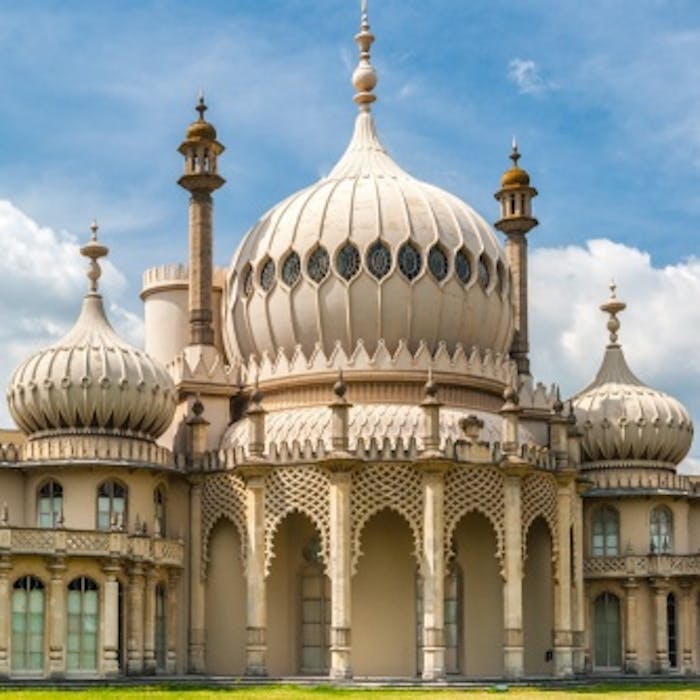
Brighton Pavilion - Regency oriental opulence on the south coast
The Royal Pavilion, also known as the Brighton Pavilion, is a Grade I listed extravagant former royal residence in Brighton Beginning in 1787, it was built in three stages as a seaside retreat for George, Prince of Wales, who became the Prince Regent in 1811, and King George IV from 1820.
In the mid 1780s George, Prince of Wales, rented a small lodging house overlooking a fashionable promenade in Brighton, which was developing from a simple fishing town to be an established seaside retreat for the aristocracy, wanting to escape to the coast from the stress of London.
The town also proved popular for the therapeutic health-giving sea water remedies made famous by Dr Richard Russell, a physician from nearby Lewes. The prince had been advised by his physicians to benefit from Brighton’s climate and to try out the sea water treatments. His decadent lifestyle led to him incurring heavy debts. In 1787, after much pleading and many promises by the Prince, the House of Commons agreed to clear his debts and increase his income.
George then hired architect Henry Holland to transform his Brighton lodging house into a modest villa, which became known as the Marine Pavilion. With his love of visual arts and fascination with the mythical orient, George set about lavishly furnishing and decorating his seaside home. He especially chose Chinese-origin furniture and objects, and hand-painted Chinese wallpapers. In 1808 a new stable complex was completed with an impressive lead and glass-domed roof, providing facilities for 62 horses.
In 1811 George was sworn in as Prince Regent because his father, George III, had been deemed incapable of acting as monarch. At that time the Marine Pavilion was still a modest building in size. George had further ambitions for it, so in 1815, he commissioned John Nash to begin the transformation from modest villa into the onion-domed oriental palace still present today.
This construction took a number of years. Nash superimposed a cast iron frame onto Holland’s earlier construction to support a magnificent vista of minarets, domes and pinnacles. No expense was spared on the interior, with many rooms, galleries and corridors being carefully decorated with opulent embellishment and exquisite furnishings. Particular attention was paid by the architect and designers to lighting, heating and sanitation, as well as to the provision of the most modern equipment of the day for the Great Kitchen - a support to lavish banqueting events.
George became king in 1820. However, due to his increased responsibilities and deteriorating health, once the interior of the Royal Pavilion was finally finished in 1823, he made only two further visits there (in 1824 and 1827).
Further reading
Links to external websites are not maintained by Bite Sized Britain. They are provided to give users access to additional information. Bite Sized Britain is not responsible for the content of these external websites.
